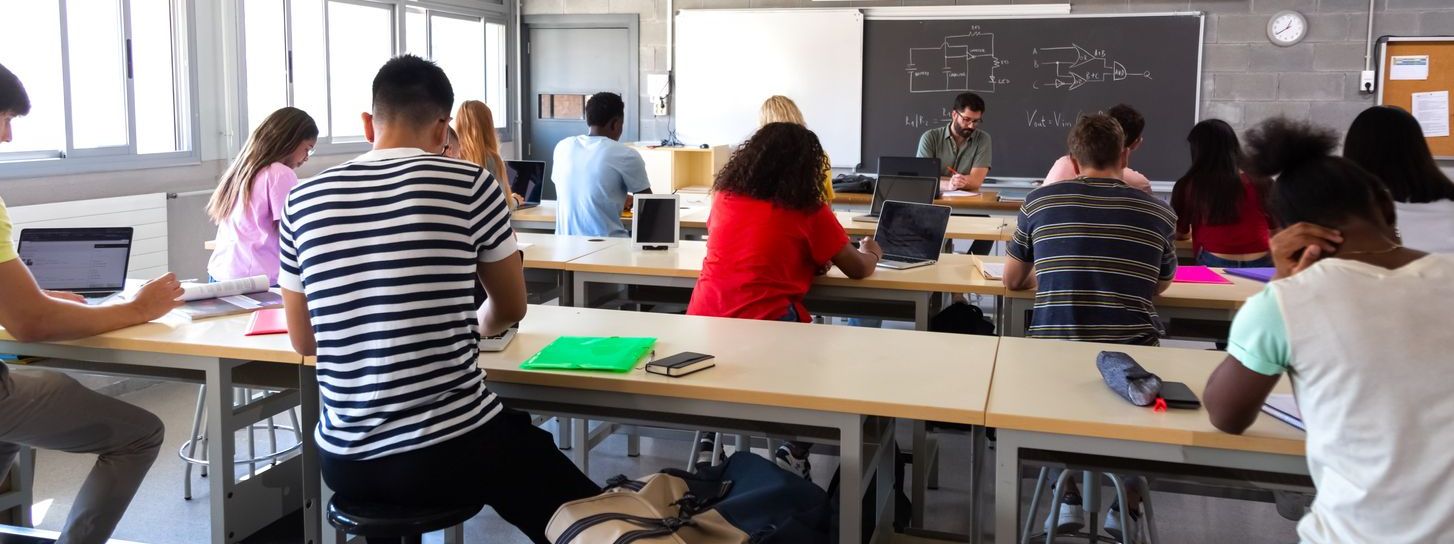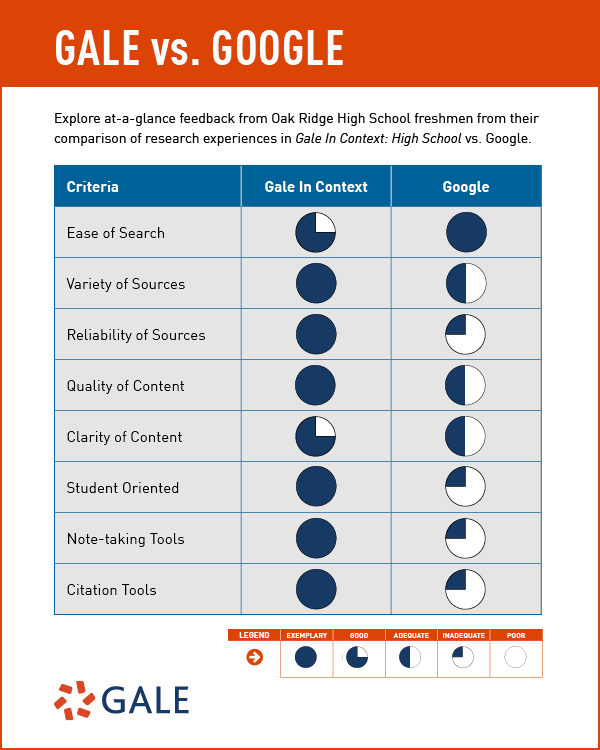From seasoned professionals to curious students, when most people have a question and need an immediate answer, they turn to one source: Google.
While Google is an excellent resource for quickly finding information, when it comes to academic research, a limitless search engine isn’t always the best choice. For students who are just developing media literacy and research skills, Google can lead to information overload from the mix of credible and unreliable sources that need to be sifted through.
How can you help your students learn when to use Google versus when to rely on academic databases? Lead them through an exploration of both options to examine key differences—while developing their research skills.
Comparing Gale & Google at Oak Ridge High School
As a teacher-librarian at Oak Ridge High School in California, Donna Martin needed an interactive way to introduce her freshman students to their school’s databases. While she could tell students had some research experience from middle school, she realized they lacked awareness of the library’s resources, an understanding of how those resources could support their school assignments, and the skills needed to research effectively within them.
When students begin their high school experiences, Donna approaches these challenges head-on with an activity she’s coined, “Comparing Information Sources: Databases vs. Google.” At the beginning of each new school year, Donna works with every freshman English class at Oak Ridge High School to lead over 600 students through this comparison.
Her scavenger hunt–style worksheet guides students to explore a topic on both Google and Gale In Context: High School. Students evaluate each platform on their own, analyzing the variety of sources available, whether the information is easy to understand, if the platform is user-friendly, and the overall quality of results.
Donna doesn’t try to dissuade students from using Google completely. Instead, she wants them to develop a better understanding of where they’re getting their information and use the right sources in different situations. Her primary goal is to ensure students know the library and database resources exist and that these sources become their go-to for school assignments. Secondarily, Donna helps students build critical thinking, information literacy, and source evaluation skills through the assignment.
So, what have Donna’s students found in their Gale vs. Google explorations?
Google Is More Approachable but Less Reliable
Because of their long-standing relationships with Google, students were immediately more comfortable with the popular search engine. However, they readily acknowledged the platform can be unreliable. While some students continued to be impressed by Google’s vast number of search results, others said the search engine overloads them with too much information, making it more difficult to find answers.
Google Student Feedback Highlights:
- Ease of Search: Google is familiar, easy to navigate, and provides direct answers to most questions in search results.
- Variety of Sources: Google provides more search results, but they’re not always reliable or useful. The results also lack variety in source types.
- Reliability of Sources: Students note they can’t tell if the information on Google is credible unless they already know how to find reliable websites.
- Quality of Content: Websites and articles linked from Google can be difficult for students to read and have lots of distractions, like ads and clickbait.
- Student Oriented: Google isn’t built for students—keywords aren’t explained, and articles aren’t structured clearly.
- Note-taking & Citation Tools: There are no built-in tools, so students can’t easily take notes or cite content as they find information.
Gale In Context Is Unfamiliar but Supports Students More
Many students have little database experience when entering high school, making them more hesitant to start searching and sorting through content on new platforms. However, once they got acquainted with the Gale In Context platform, students noticed they could find more reliable sources and take advantage of more research tools.
Gale In Context: High School Student Feedback Highlights:
- Ease of Search: Gale In Context is user-friendly and built for school research.
- Variety of Sources: Gale In Context provides a variety of reliable source types, such as news, academic journals, magazines, and critical essays.
- Reliability of Sources: Students find the Gale database more trustworthy than Google because it’s easy to see where the information is from.
- Quality of Content: Students note that sources are clear, detailed, and easy to understand. Plus, the information isn’t interrupted by ads.
- Student Oriented: Gale In Context content is easier to read because it’s student-oriented—the information is concise, keywords are explained, pros and cons are listed, and related info and articles are linked.
- Note-taking & Citation Tools: Students like having built-in tools to take notes, highlight information, and cite sources as they research.
How to Guide Your Students through a Gale vs. Google Comparison
Curious to learn what your students’ results would be? Here’s a quick guide to help you introduce students to your school’s resources and develop their research skills: Download the Gale vs. Google comparison worksheet.
As you move through the exercise, point out that while Google is a great resource for everyday questions, databases like Gale In Context can lead them to more relevant information when it comes to school projects and research. Plus, as students explore both Gale and Google resources, they’ll practice key skills, including information literacy, source evaluation and citation, critical thinking, and more. Use the activity as a fun way to see students come to their own conclusions and become more discerning.
Completed the lesson? Share your students’ feedback! Your Gale rep would love to relay your insights to our product partners to help improve student research experiences and share with other educators to help drive student awareness of resources.



